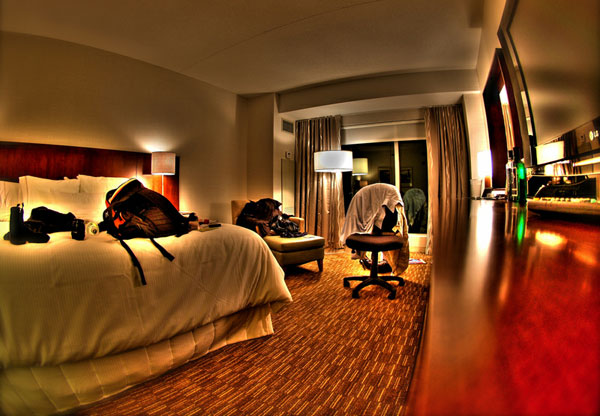Microbes in the hotel
You want to avoid the microbes during your stay at the hotel? In the advice of scientists, to be able to do that, it is best not to turn on the television or turn on the light, because the TV remote control and light switches are one of the dirtiest things. in the hotel room.
According to Live Science, researchers from the University of Houston conducted research on the level of bacteria in hotels. They conducted sampling of bacteria from a number of hotel objects in three US states. It was originally planned that toilets and wash basins would be microbes, but the results showed that many of the old objects that were not on the list of the dirtiest things in the hotel suddenly appeared: remote control distant TV and electric light switches.

Control the television and the electric switch is the place where the most bacteria in the hotel
Jay Neal, a microbiologist at the University of Houston, said: 'Of course, the hotel rooms are not operating rooms, but certainly need to be improved in terms of hygiene'.
Room cleaning staff takes about 30 minutes to clean each room. If researchers can determine which of the rooms are the dirtiest, the cleaning process can be done more efficiently.
The lowest concentration of bacteria is found in the headboard, curtain rod and bathroom door handles. Meanwhile, the dirtiest object in the room is found in the housekeeping cart, specifically, the mop and sponge.
This is also a problem, because that means that the bacteria are "manipulated" from room to room. Scientists recommend that cleaning agents should be replaced during each room cleaning to reduce the rate of bacteria dispersal.
Tests show that the level of bacteria in the hotel room is 2 to 10 times higher than the allowable level in hospitals. High levels of bacteria do not mean that people will be infected, but it increases this ability many times.
However, research is limited by the narrow range - it is only conducted in 9 hotel rooms in three states: Texas, Indiana and North Carolina.
The study was presented at a conference of microbiological researchers in San Francisco.
- Obsessed the 5 most terrifying haunted hotels in America
- Secretly 'heavenly' without any hotel staff daring to tell you
- Shark microbes do not protect against cancer
- Japan has the first robot hotel in the world
- Admire the 5-star floating hotel against natural disasters
- Unique hotel 'fort' between the ocean
- The hotel is built entirely from salt
- Secrets that hotel staff only revealed when they quit
- Dubai inaugurates the world's tallest hotel
- The US opened a hotel on the universe, costing $ 800,000 a night
- The hotel once boasted the use of robots that were just enough to lay off robots in bulk
- The first human space hotel opened in 2025
 Green tea cleans teeth better than mouthwash?
Green tea cleans teeth better than mouthwash? Death kiss: This is why you should not let anyone kiss your baby's lips
Death kiss: This is why you should not let anyone kiss your baby's lips What is salmonellosis?
What is salmonellosis? Caution should be exercised when using aloe vera through eating and drinking
Caution should be exercised when using aloe vera through eating and drinking